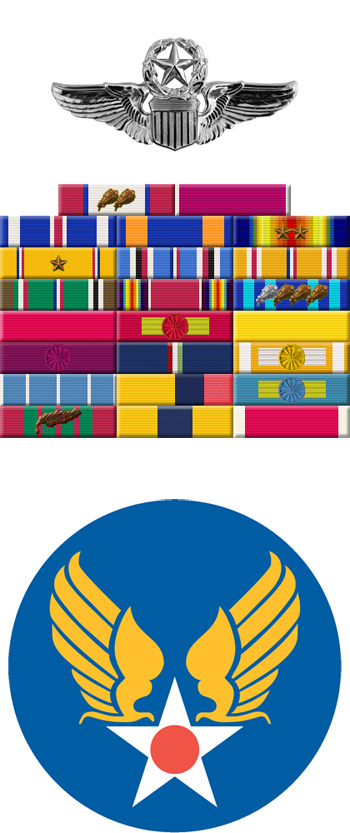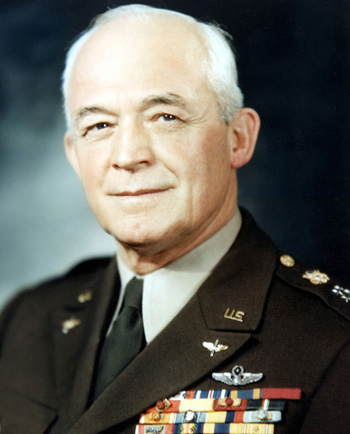
|
Henry H. Arnold |
 |
|||
| Rank, Service | ||||
General of the Air Force, U.S. Air Force |
||||
| Veteran of: | ||||
|
||||
| Tribute: | ||||
Hap Arnold was born on June 25, 1886, in Gladwyn, Pennsylvania. He entered the U.S. Military Academy at West Point in 1903, and was commissioned a 2d Lt of Infantry in the U.S. Army on June 14, 1907. His first assignment was with the 29th Infantry Regiment in the Philippines from 1907 to October 1909, and then at Fort Jay, New York, until April 1911, when he was assigned to the Aeronautical Division of the U.S. Army Signal Corps. He received his pilot training from the Wright Brothers in Dayton, Ohio, from May to June 1911, was awarded FAI pilot certificate Number 29 on July 6, 1911, and the U.S. Military Aviator Certificate Number 2 in 1912, making him the 2nd rated officer in U.S. military history. Arnold's next assignment was as a flight instructor at the Signal Corps Aviation School in College Park, Maryland, and then at Augusta, Georgia, and back to College Park, from June 1911 to October 1912. On October 9, 1912, Lt Arnold won the first MacKay Trophy, and then served in the Office of the Chief Signal Officer in Washington, D.C., from November 1912 to September 1913. He then returned to the Infantry, serving with the 9th Infantry at Fort Thomas, Kentucky, from September to November 1913, and then with the 9th Infantry in the Philippines from November 1913 to March 1916. Arnold served with the 3rd Infantry at Madison Barracks, New York, from March to May 1916, and then returned to the Aviation Section of the U.S. Army Signal Corps, where he served with the Aviation School at San Diego, California, from May 1916 to February 1917. He served in the Panama Canal Zone from February to May 1917, and then served on the staff of the Aviation Section in Washington, D.C., until November 1918, when he went to France. Arnold then served as District Supervisor, Western District of the U.S. Army Air Service from January to May 1919, followed by service as Air Officer for the 9th Corps Area at the Presidio of San Francisco, California, from May 1919 to October 1922. Col Arnold was Commanding Officer of Rockwell Field, California, from October 1922 to August 1924, and he then attended the Army Industrial College in Washington, D.C., graduating in 1925. He next served as Chief of the Information Division in the Office of the Chief of the Air Corps until March 1926, followed by service as Commander of Marshall Field, Kansas, until June 1928. Col Arnold attended the Command and General Staff School at Fort Leavenworth, Kansas, from June 1928 to June 1929, and then was Commanding Officer of the Fairfield, Ohio, Air Depot and Chief of the Field Service Section of the Material Division until February 1931. His next assignment was as Commanding Officer of March Field, California, from February 1931 to February 1935, during which time he won a 2nd MacKay Trophy in 1934. He commanded the 1st Wing of the General Headquarters Air Force at March Field, California, from February 1935 to January 1936, and then served as Assistant to the Chief of the Air Corps until September 1938, when he was appointed Chief the Air Corps. He also became Deputy Chief of Staff for Air in October 1940, and was made Chief of the Army Air Forces in June 1941. When the War Department General Staff was reorganized in March 1942, Gen Arnold became Commanding General of the Army Air Forces. He was promoted to five-star General of the Army on December 21, 1944, and he left regular active duty on June 30, 1946, although as General of the Army, he was officially on active duty until the day he died. Arnold was made the first, and only, five-star General of the Air Force on May 7, 1949. He died on January 15, 1950, and was buried at Arlington National Cemetery. |
||||
|
||||

